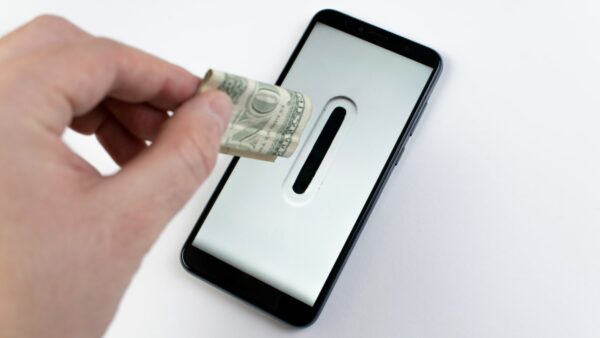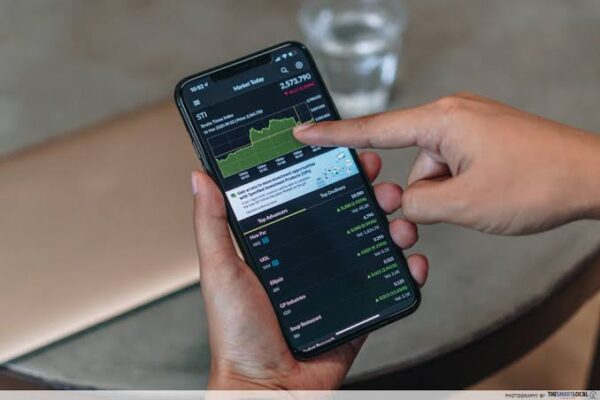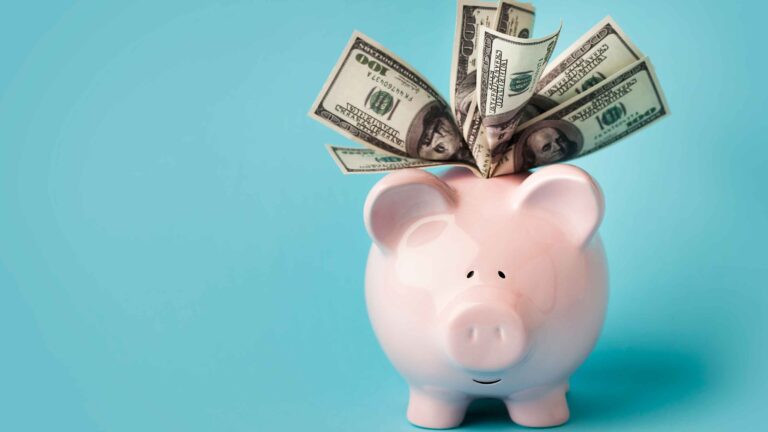Last updated Apr. 3, 2023 by Favour Chinaza
Micro-investing is a fantastic way to start investing and a good strategy to save if you don’t have much money, to begin with. If you are new to the game of investing, micro-investing is a great place to start, but it should not be your last destination.
Micro-investing is also a good strategy for people who don’t have much money to invest because it may teach them about saving, compounding growth, and long-term profits.
These small assets in your micro-investment may have a better chance of growing if placed in an investment account rather than a traditional savings account.
This is because investing accounts frequently offer higher interest rates.
Micro-investment platforms, in general, attempt to remove barriers inherent in traditional investing, such as account minimums and trading costs.
Prospective investors interested in dabbling in micro-investing can choose from a wide range of mobile apps.
These micro-investing firms and platforms may differ in several ways, including the types of investment strategies and products made available to their respective clientele.
Good Read: Titan Investing App Review: Investment Management for Everyone
What Is Micro-Investing?

Micro-investing is a type of investing in which you invest small amounts of money as your budget allows.
For example, micro-investing entails adding a few dollars and a few cents instead of making regular stock purchases, such as $500 per month.
Micro-investing involves adding small amounts of money to your portfolio daily. Many micro-investment strategies rely on an app or other program linked to your debit card.
Rounding up your purchases is a popular way to fund your investments. Acorns is one of the most well-known apps that provide this feature.
For example, if you spend $2.57 on a cup of coffee in the morning, the app automatically rounds up to the nearest dollar and transfers $0.43 to your portfolio.
Of course, the apps allow you to make additional contributions if you have funds available.
Most micro-investing platforms do not allow you to select individual stocks to invest in. Instead, they use mutual funds and exchange-traded funds (ETFs) to build a diversified portfolio of stocks and bonds.
Depending on the service, you can choose the funds you want to invest in or let the app choose funds based on your answers to risk tolerance questions.
Micro-investing is actually one way to learn how to invest in stocks if you are a beginner.
How is Micro – Investing Different From Regular Investing

Micro investing and traditional investing are not that dissimilar. You’re still investing in financial securities and attempting to maximize your profits.
The main distinction is that micro-investing is more accessible to the general Public.
Regular investing entails making monthly deposits rather than investing a lump sum all at once. It is the ‘little and often’ investment strategy that can be less risky and more profitable.
Regular trading platforms frequently have high minimum investments, and you may need to save $1,000 or more before even considering investing.
Fees of $5 to $7 per transaction are also possible, making small-dollar trades prohibitively expensive. Diversifying your investments can also be difficult if you only buy individual shares.
You will end up buying shares at different prices if you regularly drip-feed your money into the stock market.
While micro-investing is the practice of investing small amounts of money over time rather than a large lump sum all at once, it’s analogous to putting spare change in a piggy bank.
Micro-investing platforms have low to no minimum investment requirements and do not charge trading fees.
Depending on the platform, you can save at your own pace, even if you can only afford to invest a few dollars per month. And, because you can buy fractional shares, you can start with a diverse portfolio.
Regular investment entails investing a fixed amount in an investment fund, for example, at regular intervals and automatically.
With regular investing, you can just learn how to buy stocks online for free, but it is not so with micro-investing.
Micro Investing Vs. Larger Sum Investing

There is nothing inherently wrong with investing larger sums of money; it has been done much longer than micro-investing.
However, you will not optimize your growth if you have to save money to invest more.
Remember that your money will only grow if invested in the market. So every day, your money is in your checking account, not earning any interest.
Assume you have $100 to invest weekly, but your traditional investing platform requires a $1,000 investment.
You’d have to wait 10 weeks to save enough money to invest. So you’d have an average of $500 sitting in checking for 10 weeks doing nothing.
Assume you do this regularly, and your investments earn a (modest) 5% annual return on average. You’d be losing $25 per year if you didn’t make a return on an average of $500. (and the compound growth that comes with it).
You’ll be able to capture all of that growth with a micro-investing platform.
What is a Micro-Investing Platform?
A micro-investing platform is an application that simplifies the investment process by allowing users to save and invest small amounts of money regularly.
Micro-investing platforms are distinct from traditional investment schemes in that no minimum amount can be saved. In addition, unlike traditional investment schemes, they charge nominal brokerage and subscription fees.
How Does Micro-investing Work?

Micro-investing generally allows you to invest your savings even if you don’t have many. Small purchases that have become a habit, as well as rounding up to the nearest dollar when spending, can assist you in getting started.
Personal finance apps like Acorns and Stash even provide debit cards that round up your purchases and invest the difference in ETFs or fractional shares of stock.
In recent years, stocks of well-known companies such as Amazon and Google’s parent company, Alphabet, have traded for more than $2,000 per share, making it difficult for some investors to purchase just one share.
When stock prices reach these levels, many companies split their shares to help make them more affordable. However, until then, fractional shares allow you to invest regardless of how much a single share costs.
Over time, this method of consistently investing savings in the stock market has proven profitable.
Investing a fixed amount each week or month is known as dollar-cost averaging, and it removes the decision of market timing from the equation.
Consistent purchases imply that you will buy more stock when prices are low and fewer stock when prices are high. You’ll be buying over time and averaging your purchase prices with dollar-cost averaging.
Tax Implications
If you earn a certain amount from micro-investing, you may be required to complete additional forms during tax season.
Remember that the deadlines for some of these forms differ from those for your regular taxable income. Form 1099-MISC, for example, is due on January 31 of the following year.
Before tax season, confirm your profits and losses using your micro-investing app. This can also assist you in determining which tax forms you require.
Round-Ups
A round-up option is available in many micro-investing apps. Every time you make a purchase, the app will round up your change and invest it.
For example, if you pay $5.35 for a coffee, the app will deposit .65 cents into your savings account.
Micro-investing is an excellent way to begin saving for those still living paycheck to paycheck. While this option will not provide you with a secure retirement fund, it will get you used to saving small amounts regularly.
Recurring Transfers

Most micro-investing apps allow you to set up recurring transfers, enabling you to send a set amount from your paycheck toward investments automatically.
While saving pennies through the round-up feature accumulates over time, transferring a larger amount regularly will accelerate your savings.
Everyone’s financial journey, however, is unique. You might not be ready to invest large sums just yet. What matters most, in this case, is that you stick to your own pace and gradually develop healthy financial habits.
Retirement Accounts
Micro-investment apps, such as Acorns, provide IRA and Roth IRA accounts. These investment vehicles are excellent choices for those who do not wish to invest in stocks but wish to save consistently for the future.
Each micro-investing app has a different percentage of return. So before investing, it’s critical to understand the distinctions between an IRA and a Roth IRA.
Micro-investing Examples
The beauty of micro-investing is that it can be tailored to your budget and financial situation. Here are a few examples of how it can be implemented:
Assume you create a 50-30-20 budget and decide you can save and invest $50 per month. Because saving and investing serve different purposes, you choose to put $30 per month into an emergency savings account and $20 per month into an investment account.
Assume you get a raise at work that increases your biweekly pay by $100. Naturally, you want to invest extra money, so you set up your investment app to automatically deposit $50 from each paycheck into your investment account.
You can deposit very small amounts of money daily when you make purchases if your investment app offers a bank account with a debit card that rounds up your purchases. For example, assume you spend $3.50 on your weekday morning coffee.
The extra $0.50 is deposited into your investment account by your bank account, which rounds up the purchase to $4.00. So, just from your coffee purchases, you have $2.50 per week, or about $10 per month, toward micro-investing.
How To Get Started With Micro-Investing

Here’s how to get started with micro-investing if you think it would be a smart way to help you reach your financial objectives.
1. Choose Between Micro-Saving And Micro-Investing

You should not go into micro-investing blindly. Knowing your ultimate goal will help you decide whether to save or invest.
Micro-saving could be the answer if you’ve struggled to save for the future but have a short-term, more manageable goal. For example, one can save for a small emergency fund, a trip, or a down payment on a vehicle, among other things.
Micro-investing could be the start of a long-term investment strategy. If you’ve had trouble investing in the past but know you need to achieve your goals, micro-investing may help.
2. Create an Account

There is no best micro-investing app because it depends on your objectives. Betterment charges a monthly fee of $4.
If you make at least $250 in recurring deposits or have a balance of $20,000 or more in your Betterment accounts (including Cash Reserve, checking, and crypto), you’ll instead pay a 0.25% yearly fee on your investment balance.
2. Select Your Asset Allocation
Asset allocation determines the right combination of assets (e.g., stocks, bonds, and cash) to help you reach your financial goals.
Micro-savings and micro-investing applications often include a risk tolerance and goal questionnaire that may guide your investment decisions.
After taking a few of these tests, I can say that their recommendations are generally good and that most investors should follow them.
As a general guideline, keeping most of your assets in cash while saving for fewer than three years is wise.
Inflation may eat into your returns, but stock prices tend to fluctuate wildly in the near run.
Consider this all-too-common scenario: Let’s pretend you’re micro-investing for a trip you wish to take in 18 months.
It’s not unheard of for an investor’s portfolio to fall 30% after 16 months of disciplined saving. You’re still a long way from your objective, even if the trip is just two months away.
Pros and Cons of Micro-investing
Pros of Micro-Investing
- Their minimum investment is low:
Micro-investing allows you to start investing even if you don’t have much money. For example, you can begin investing in ETFs and fractional shares of stock with just a few dollars.
This is impossible with more traditional investments such as mutual funds, which typically require a minimum investment of a few thousand dollars.
- Diversification:
Investing in low-cost ETFs linked to broad market indexes such as the S&P 500 allows you to build a diversified portfolio for as little as a few monthly dollars. In addition, many best Real Estate REITs and ETFs to consider for micro-investing.
- Small sums add up:
Contributing even small amounts of money to an investment account consistently can add up over time, potentially turning your spare change into tens of thousands of dollars over decades.
- Automatic Savings:
Micro-investing helps to automate the investing process, making it easier for people to stick to their plans through good and bad times.
It also helps to establish a habit of saving early in your investing career, even if you can only save a small amount of money. You can also learn to set up automatic savings and put your savings on autopilot.
Cons of Micro-investing
- Won’t get you to your retirement goals:
While micro-investing is a great way to get started investing, especially if you’re young, it’s unlikely to result in the kind of savings that will allow you to retire comfortably. You’ll also need to save more money through your employer’s retirement plans and by contributing to tax-advantaged accounts such as traditional and Roth IRAs.
- Need to save more than spare change:
Most experts recommend saving between 10% and 20% of your income for retirement planning and an emergency fund, so if you can only save a few dollars per month, you may need to reconsider your budget.
There are usually best and worst places to keep an emergency fund, and micro-investment may just be a good option.
- Fees:
Users of micro-investing platforms such as Acorns and Stash are charged monthly fees. Fees vary depending on the plan, but Stash charges $3 monthly for the middle plan.
This isn’t much, but if you can only contribute $5 or $10 to your account each month, a $3 fee will consume a significant portion of your return. Of course, Stash has pros and cons, but it is a good way to start.
- Robo-Advisors oversee their operations.
Robo-advisors are a type of A.I. that manages your money using pre-programmed algorithms.
They may give the appearance of personalization by asking you a few questions about your investment preferences upfront. Still, these are only used to determine which algorithm you fall under.
Best Micro Investing Tips

✅Understand the process of investing
Before you start investing, learning some key concepts that will help you succeed is a good idea. These are risk tolerance, compounding returns, long-term investing, and index investing.
✅Investigate micro-investing platforms.
Before investing anywhere, you must understand the platform you will be investing in. There are lots of best micro-investing apps to check out. Before you deposit money into an account, learn about the fees it charges and the investment options it provides.
✅Pay close attention to the fees.
Fees can consume a significant portion of your return over time, but they can also consume a significant portion of your investments as a micro investor.
If you invest $25 monthly, a $5 monthly fee consumes 20% of your monthly contributions. Examine the monthly fees charged by a micro-investing platform and the expense ratios charged by the investments themselves.
✅When possible, include recurring transfers.
Adding your spare change is a great way to get into the habit of investing, but adding regular transfers can turbocharge your investment account.
First, set up a recurring transfer for whatever amount you can afford each payday. Then, check in once a month to see if you can raise that amount.
✅Don’t go out of your way to invest.
Don’t go overboard when it comes to investing. If you can’t afford to invest for one month, it may be better not to invest than to invest and put bills on a high-interest credit card.
On the other hand, if you stretch yourself too thin, you may have to sell your investments if you cannot pay your bills.
When you do this after your investment has lost value, you lock in your losses. This may make you feel less confident about future investments.
What to Avoid When Micro-investing

🚫Investing outside of your risk tolerance:
Before investing, take a risk tolerance quiz to determine how much risk you’re willing to accept. If you do not adhere to your risk tolerance, you may become concerned about a downturn and lose your investments.
🚫Leaving your investments in cash:
When you first begin investing, knowing what to do can be difficult. Depositing money into an investment account does not always imply that it is invested. Instead, it is kept in cash in the investing account. Therefore, ensure that the funds you transfer to your investing account are invested in your selected investments.
🚫Investing money that you may need to withdraw in the near future:
In the short term, investing money can result in gains or losses. In a diversified investment portfolio, the profits usually outweigh the losses over time, though this isn’t always true. If you invest money, you need it immediately and may have to sell at a loss.
🚫Using a micro-investing app indefinitely:
Micro-investing apps are a great way to start investing, but they may not always be the best option. When your balance reaches a few thousand dollars, look into traditional brokerage firms to see if they can better meet your needs.
How do Micro-investing Apps Make money?

The revenue of some micro-investing apps is linked to an investment institution. Betterment, for example, charges either $4 per month or an annual fee of 25% of your portfolio’s assets (if you deposit at least $250 per month or have $20,000 or more in your Betterment account).
Other apps act as intermediaries or third parties rather than as investing institutions. In these cases, the product is the technological innovation or convenience they provide —artificial intelligence.
This artificial intelligence transfers money from your bank account to investment or savings accounts, the round-up feature that allows you to stash your spare change or the technology that helps you stick to your investment strategy.
These apps typically charge a monthly or annual subscription fee
Calculating Returns
Investing small amounts over time can add up to a large sum of money, but the returns from micro-investing must be balanced against the costs.
When it comes to investing money, a person has two options. The first option is to invest $10 monthly in a micro-investing platform with a $1 monthly subscription fee.
The money collected at the end of the year is then invested in a portfolio with a 4% annual return.
The second option is to invest $120 in a one-year fixed deposit scheme with a $6 one-time fee and a 5% annual return. After one year, the following is the amount he has saved:
In fact, micro-investing is probably not the best option for people who want to build a substantial investment.
Although it accumulates significant savings over time, the value of future savings decreases significantly after accounting for inflation and other costs.
In this case, the person would be better off saving a large sum of money and depositing it in a traditional fixed deposit account.
It is not always the case, but calculating the net returns is always a good idea when deciding between two investment options.
Best Micro-Investing Aps To Start With
Stash
Stash also provides micro-investment opportunities in thousands of stocks and ETFs. Its platform prioritizes long-term investing over day trading. Stash’s Stock-Back debit card is one of its distinguishing features.
You can earn stock in the companies you shop with when you use this card as long as they are listed on the Stash platform.
When you shop at companies that aren’t on Stash, you’ll earn shares of an ETF of your choice.
The standard Stock-Back rate is.125% and can go up to 5% at certain merchants. Stash charges a monthly fee that starts at $1, so keep that in mind as you decide where to invest.
Public
Public offers micro-investment opportunities with a social twist. Investors can join Public to share insights and chat with other investors. In addition, Public does not require a minimum deposit to open an account, offers commission-free trades, and allows you to purchase fractional shares of stocks and ETFs.
You can also get a free stock when you refer your friends to the app. In addition, you and your friends will each receive a fractional share of stock in a company, allowing you to begin building your investment account balance.
Betterment
Betterment is a low-cost option that doesn’t require a minimum balance for those who don’t have much money to start investing.
Betterment is a robo-advisor that provides some advantages of working with a traditional financial advisor. It reduces costs by relying on technology rather than human advisors.
Betterment lets you buy fractional shares of ETFs. It also offers valuable services such as rebalancing, tax-loss harvesting, and asset allocation to help you achieve better investment returns.
Acorns
Acorns is one ideal micro-investing app for you if you want to automate investing your spare change. Acorn’s round-Ups allow you to connect your bank account, debit card, or credit card to its system.
Then, Acorns will round up your purchases to the nearest dollar in those accounts. When the round-ups total $5, the money will be transferred to your Acorns Invest account.
Trade 212
To micro-invest, Trading 212 is the finest app in 2022. Stocks and ETFs that aren’t a scam don’t charge commissions. Instead, opening an account is fast and simple—superb exchanges for financial transactions.
eToro
Second place goes to eToro—online stock and ETF trading without commissions. Establishing an eToro account is quick and painless while helping you engage in micro-investing on a social level. In third place, we find Interactive Brokers.
There aren’t many costs involved with trading. Selection of goods covering a lot of ground. Superb resources for academic inquiry are readily available.
Fidelity
Free trading in stocks and ETFs listed in the United States. Excellent trading tools and market analysis. Stocks in the U.S. and throughout the world.
Webull
Webull has only just been added to the list, but he has already made it to number five. Options and stock trading are included at no cost. Setting up a new account is quick and simple—superb exchanges for financial transactions.
Why Do People Choose Micro Investing?
Without a doubt, micro-investing works to accumulate small sums of money over time in the hopes of accumulating a larger sum.
More on the direct value of micro-investing: it’s a set-it-and-forget-it approach that works for you automatically while you do your business as usual.
What’s great about it is that you don’t have to think about saving—instead, you invest the spare change you’d otherwise have left in your bank account, car cup holder, or home coin basket.
This simplified, automated approach to investing requires very little effort, giving these micro-investing apps significant power.
And because micro-investing allows you to invest your spare change regularly, the barriers to entry are low. In other words, you don’t need much money to open an account and invest.
Instead, you may only be able to open most of these accounts with a $1 or less. In fact, there are no account minimums at all.
As with any millennial cliché, you can start micro-investing by putting the change from your Starbucks latte into the stock market.
That’s hitting the easy button—taking the account’s linked debit or credit card and automatically depositing it into your retirement or brokerage account.
Can Your Money Add up to Something Worthwhile?

Microinvesting can add up over time, especially if done consistently. Here are two examples to help you understand what to expect.
A person decides to cancel their $14 monthly streaming subscription and invest the money in a stock with an annual return of 8%.
They will invest this amount every month for the next 40 years. So without fees, they have approximately $48,873 at the end of 40 years.
In 2017, people made an average of 70 payment transactions per month, according to the Federal Reserve Bank of Boston. If each payment were rounded to the nearest dollar, the person would invest $35 monthly.
They will do this every month for the next 40 years, with an annual return of 8%. So without fees, they have approximately $122,185 at the end of 40 years.
Is Micro-Investing a Good Strategy?
Many people dismiss micro-investing because they see it as nothing more than rounding up your Starbucks purchases by $0.50 for the rest of your life. Furthermore, they argue that doing so will only net you a small sum of money over time.
While not entirely false, especially when considering the fees charged by some investing platforms, micro-investing does not have to end with Round-Ups, Stock Backs, or whatever the branded term is for topping up purchases on a linked debit or credit card.
Instead, as you get older, try to make recurring deposits into your account as your pay increases.
This can come from side hustles, real estate investing, investing in the best passive income ideas, or simply advancing your career.
When you first start working, no one expects you to invest half of your pay. Building financial security and an investment portfolio takes time.
Micro-investing apps help you develop the habit of knowing that your purchases result in something more important: saving for the future.
As your financial resources grow, you can contribute more and more to your account, increasing your wealth.
Enough with the mockery of micro-investing yielding micro results.
Consider micro-investing as part of your investment strategy, linked to other long-term decisions you make about retirement savings.
Investing for the long term necessitates dedication, persistence, and time-consuming work.
You could start small with a micro-investment app while saving through your employer’s retirement plan, your individual retirement account (IRA), building an emergency fund, saving for a down payment on a house, and paying off any high-interest debt you have.
All of these small steps add up to something significant. “The sum is greater than the sum of its parts,” as the saying goes. These small efforts add up and help move the needle in the right direction.
Micro investing should not be the only factor driving your retirement savings or any other goal. Instead, it should be a tool in your arsenal to help you build wealth faster.
Do You Have a Plan for Moving Beyond Micro-Investing?

Micro-investing is a great place to start, but it’s only the beginning. In the long run, you should consider switching to another investment service with more features and, ideally, a lower fee structure.
This can range from an account with a major brokerage firm, like Vanguard, where you invest in mutual funds and ETFs, to an account with a robo-advisor, like SoFi Invest, for those who prefer to remain hands-off.
Good Read: 8 Best Micro Investing Apps
Bottom Line
If you don’t have much money, to begin with, micro-investing can be a good way to get started in the world of investing and saving. On the other hand, if you are new to the game of investing and consider yourself a novice or newcomer, you should consider micro-investing. It is a low-cost way to get started in the stock market.
Investing is one of the most important steps to achieving financial freedom. While money in a savings account may earn some interest, investments have a much higher potential return.
Getting started is one of the most difficult aspects of investing for most people. Knowing how to invest and what to invest in can be difficult. It can be even more difficult for many people to find the money to invest. Some brokerages or mutual funds require $1,000 or more as an initial deposit.
When compared to putting your money in a bank account and depending on the interest rates, making money through micro-investing may yield a much higher return on your investment.
Frequently Asked Questions
Q: Are Micro shares worth it?
Yes, micro-investments are worth it. Putting away small amounts of money consistently is preferable to investing a huge quantity simultaneously. In addition, the market’s ups and downs might have less of an impact on your finances if you invest a little bit each month.
Q: What investments will do well in the long run?
High-yield savings accounts, short-term certificates of deposit, short-term government bond funds, and “Series I bonds” are projected to be the most profitable investments in 2022. funds that invest in short-term corporate bonds, funds that invest in the S&P 500 index, funds that invest in dividend stocks, and funds that invest in value stocks
Q: Where should I invest in the next 6 months?
A handful of the greatest options for generating a return in the near term are outlined below. Short-term U.S. government bond funds, high-yield savings accounts, money market funds, cash management accounts, and funds investing in short-term corporate bonds.
Q: Should I stop investing to pay off debt?
Any extra money you have should be put to good use, either investing or paying off debt. Investing makes sense if you can gain more money from investing than you are paying in interest on your loans. However, almost any investment will likely provide a lower return on your money than paying off high-interest debt.
Q: Can you make money with micro stocks?
Yes, you can get some interest or returns on your micro-stocks regularly, which is a great perk. But, like the adage, “Many a little makes a mickle,” micro-investing allows you to put modest amounts of money toward long-term investment objectives while meeting your short-term financial needs.
Q: Can you make money by micro-investing?
Yes, you can. Instead of putting your funds in a bank account and hoping for a decent interest rate, you might earn much more money by investing it in the stock market.
Q: What is the safest investment with the highest return?
Real estate is the safest form of investments. However, since exceeding all other investment kinds throughout the last century, including financial instruments, real estate, commodities, and art collections, the stock market has long been regarded as the source of the highest returns for investors.
Q: What’s the best thing to invest in right now?
Banks produce Certificate of Deposits, which often have a greater interest rate than regular savings accounts. When rates are expected to increase, a short-term CD may be preferable since it may be reinvested at a greater rate once it expires.







